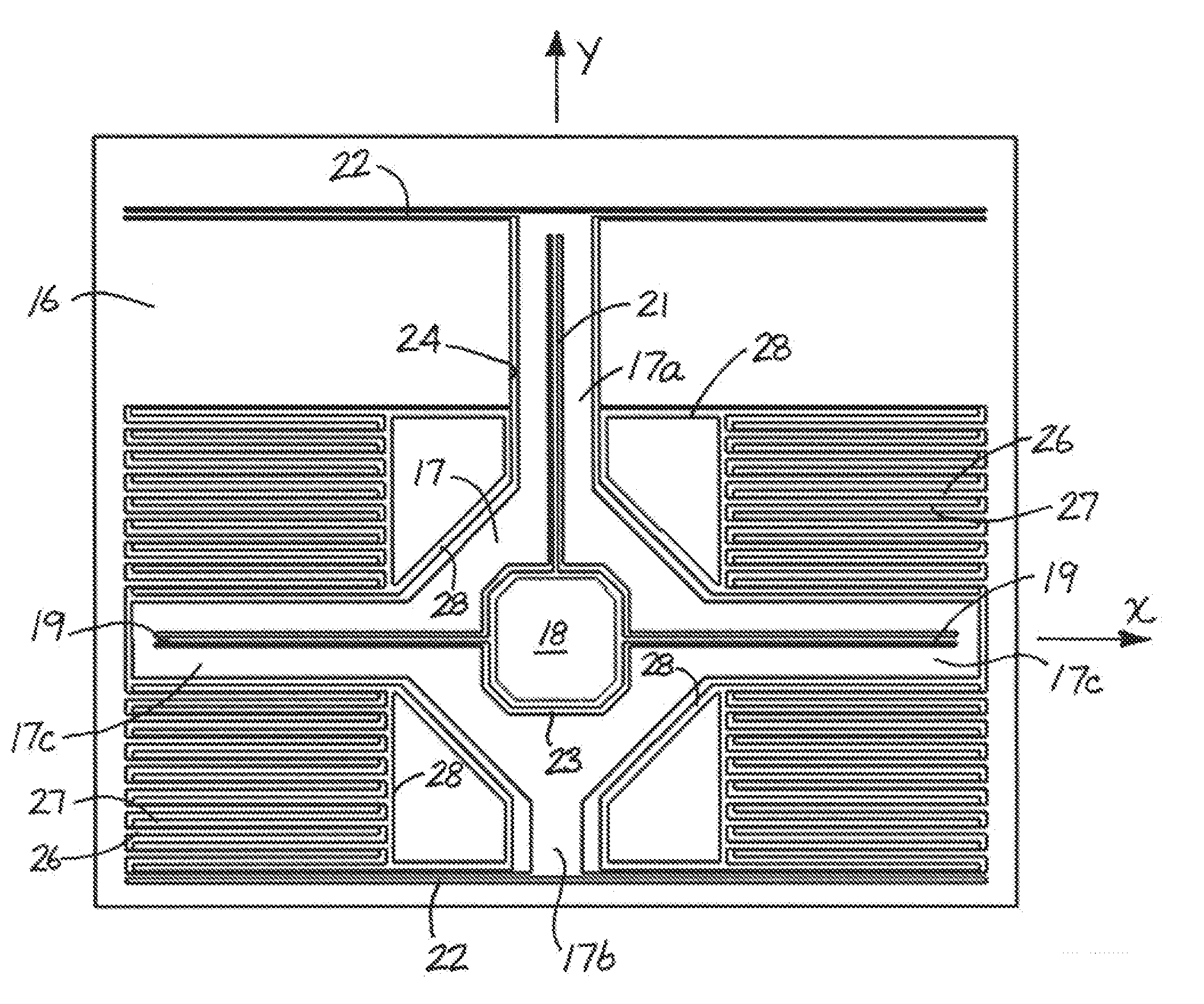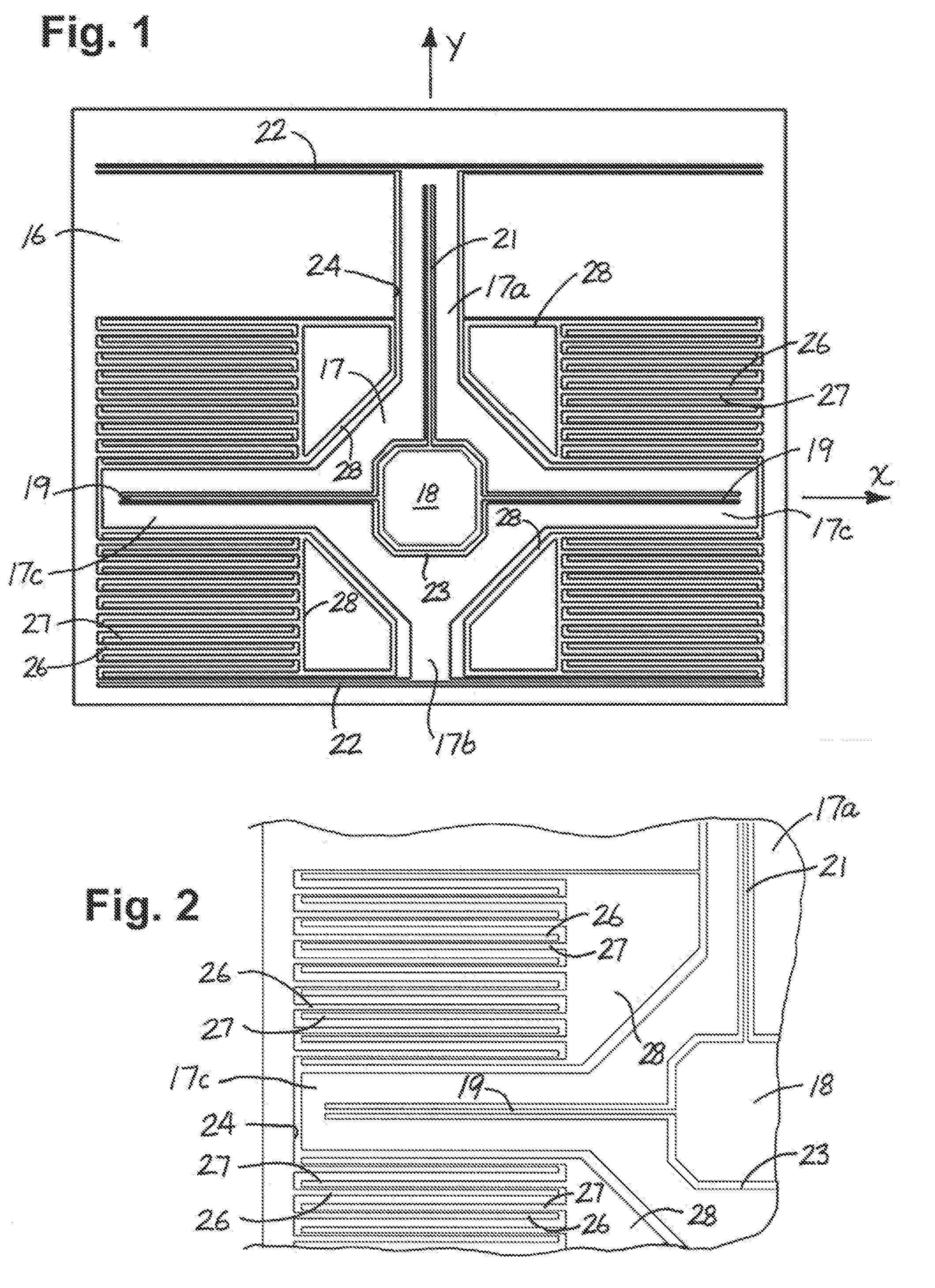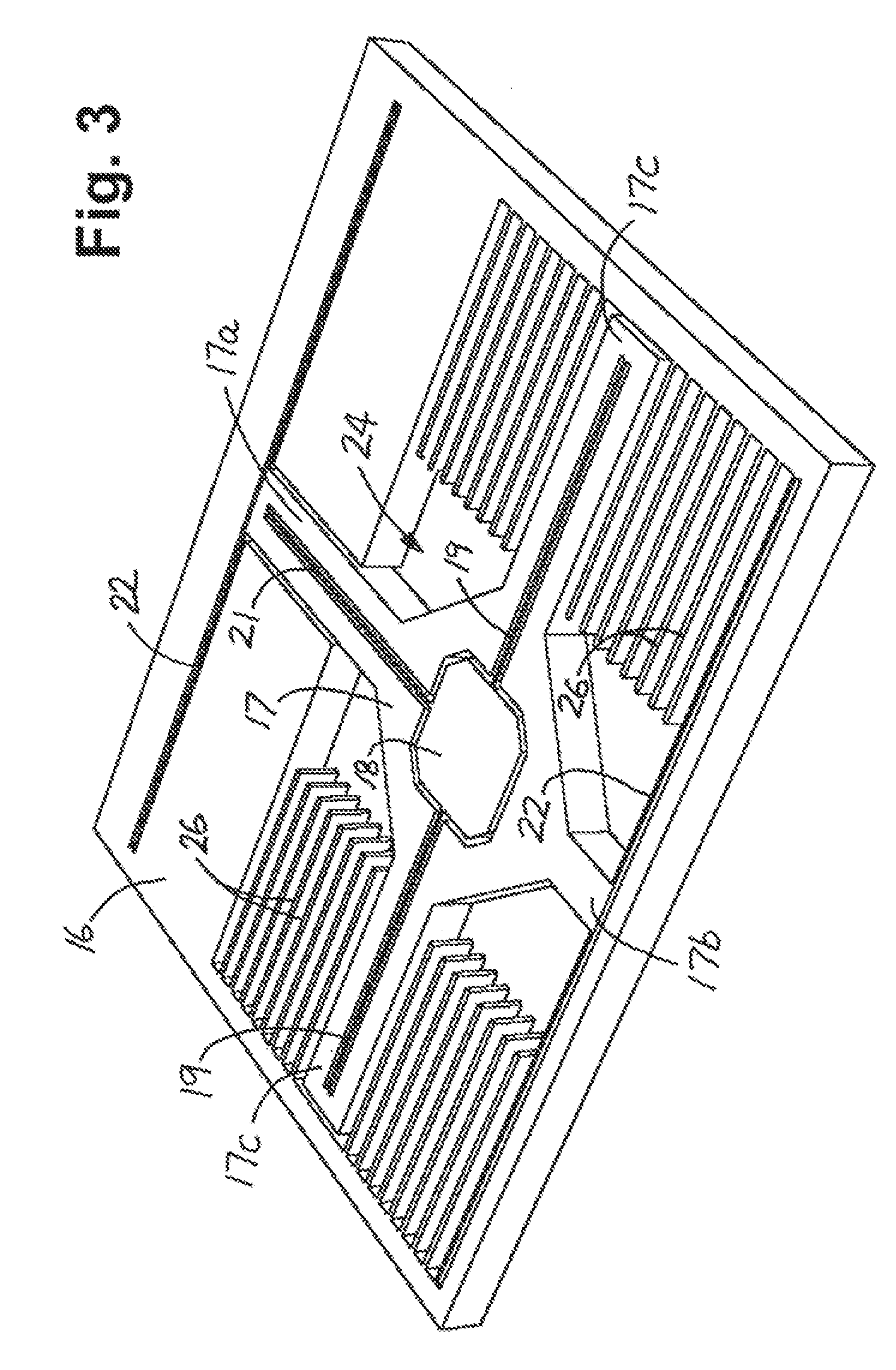Micromachined cross-differential dual-axis accelerometer
a dual-axis accelerometer and micromachine technology, applied in the direction of speed/acceleration/shock measurement, measurement devices, instruments, etc., can solve the problems of electrodes and bonding areas, a major cost factor, and the number of masses being duplicated
- Summary
- Abstract
- Description
- Claims
- Application Information
AI Technical Summary
Benefits of technology
Problems solved by technology
Method used
Image
Examples
Embodiment Construction
[0017]In the embodiment of FIGS. 1-6, the accelerometer has a single proof mass 16 suspended above a substrate for monitoring acceleration along mutually perpendicular x- and y-axes that lie in a plane parallel to the substrate.
[0018]The suspension for the proof mass includes a decoupling frame 17 which is suspended from a post 18 by flexible beams 19, 21 that extend along the x- and y-axes, respectively. The post is anchored to the substrate, and the beams prevent the decoupling frame from moving along the x- and y-axes while permitting it to rotate or move torsionally about a third axis (the z-axis) perpendicular to the x- and y-axes. The beams are relatively rigid in the z direction and prevent out-of-plane movement of the frame. Thus, the frame is constrained for torsional in-plane movement about the z-axis, with linear and torsional motion along and about other axes being suppressed.
[0019]The proof mass is suspended from the decoupling frame by flexible beams 22, 22 which exten...
PUM
 Login to View More
Login to View More Abstract
Description
Claims
Application Information
 Login to View More
Login to View More - R&D
- Intellectual Property
- Life Sciences
- Materials
- Tech Scout
- Unparalleled Data Quality
- Higher Quality Content
- 60% Fewer Hallucinations
Browse by: Latest US Patents, China's latest patents, Technical Efficacy Thesaurus, Application Domain, Technology Topic, Popular Technical Reports.
© 2025 PatSnap. All rights reserved.Legal|Privacy policy|Modern Slavery Act Transparency Statement|Sitemap|About US| Contact US: help@patsnap.com



